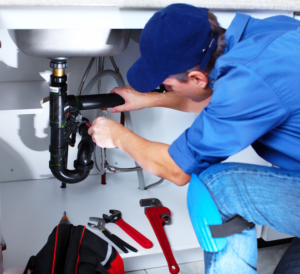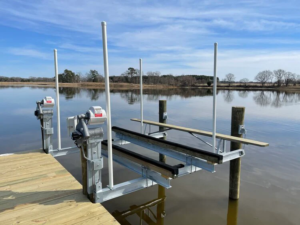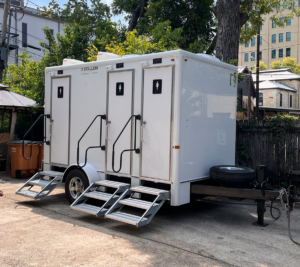Real Estate Savannah is the property that includes land and buildings. It is an important investment vehicle that offers many benefits, including cash flow and tax advantages. It is also a great way to diversify your portfolio.

Well-chosen real estate often appreciates at a rate that exceeds inflation. In addition, rental income is tax-deductible and provides a steady stream of revenue for investors.
Ethical considerations are critical to real estate transactions and can shape the reputation of the industry. They guide professionals through the complexities of real estate transactions and set standards for fairness and transparency. These considerations include ethically negotiating with clients, maintaining confidentiality, and protecting the integrity of their profession. These considerations are especially important in a competitive market where buyers and sellers have many choices. They can help real estate professionals avoid pitfalls that might lead to ethical issues like gazundering.
The Code of Ethics for Real Estate Professionals outlines the moral obligations and professional responsibilities that real estate agents and brokers must uphold. The Code of Ethics outlines key principles such as honesty and truthfulness, which are vital to fostering trust in the real estate industry. It also requires that real estate professionals disclose any known issues with a property to their clients. This information protects them from unforeseen challenges and safeguards their clients’ interests.
Another key component of the Code of Ethics is avoiding conflicts of interest, which can be challenging in the real estate industry. Conflicts of interest can arise in a variety of ways, including dual agency or personal relationships that may compromise objectivity. The Code of Ethics also stipulates that real estate professionals must maintain confidentiality regarding their clients’ personal and financial information. This ensures that clients are not exposed to sensitive information and promotes a culture of professionalism in the real estate industry.
Finally, the Code of Ethics mandates that real estate professionals provide accurate representation of property values to their clients. This can be a challenge in a competitive market, where it is tempting to inflate prices or downplay potential issues. Striking a balance between securing the best deal for the client and providing transparent information to all parties is an ongoing struggle that demands a commitment to integrity.
Although gazundering may seem like a smart negotiating strategy, it can have long-term consequences for the real estate industry. It can distort the public’s perception of real estate professionals and can impact future transactions. In addition, it may be illegal and could result in legal action. In order to avoid these pitfalls, professionals can prioritize ethical negotiation strategies that promote transparency and fairness in real estate transactions. Some of these strategies include open communication, seeking win-win solutions, and utilizing mediation when possible.
Ethics in real estate transactions
Real estate transactions are complex, and real estate professionals must balance many ethical considerations. For example, they must act in their clients’ best interests at all times and must not misrepresent a property or disclose confidential information without client consent. They must also avoid conflict of interest, and they should always follow industry regulations and the Code of Ethics. These regulations ensure that realtors are transparent and trustworthy, while promoting a professional standard of excellence.
Ethical real estate negotiation involves finding win-win solutions that benefit both parties. This approach benefits buyers and sellers, reduces the likelihood of gazundering, and promotes a healthy and trustworthy real estate market. It also requires open communication and transparency between agents and their clients. To prevent gazundering, it is important to set clear expectations from the beginning of a transaction. This includes detailing all deadlines, contingencies, and other important aspects of a sale. This ensures that both parties are aware of what to expect, and it can prevent last-minute negotiations on issues like home inspections or repairs.
In addition, ethical real estate practices involve protecting client confidentiality and putting their interests above those of the brokerage firm or other professionals. This is especially important when dealing with multiple offers. It can be tempting to prioritize the highest offer or one that comes from a personal connection, but it is important to maintain professionalism and treat all offers equally.
It is also essential to keep up with changing laws and regulations affecting real estate transactions. This can be done by taking continuing education courses or joining professional associations. These organizations can provide valuable resources and training for new real estate agents, and they can help them stay updated on the latest real estate news and trends. In addition, they can help new real estate agents navigate ethical dilemmas.
It is also essential for real estate agents to be truthful in their dealings with clients, other professionals, and the public. This is because the National Association of Realtors (NAR) Code of Ethics emphasizes honesty and integrity. It also outlines the importance of collaborating with other real estate professionals to enhance the quality of their services.
Ethics in real estate marketing
Real estate is a complex industry, and real estate professionals must be able to handle ethical challenges effectively. To do so, they must be aware of the Code of Ethics and understand how it applies to real estate transactions. In addition, they must be able to communicate clearly and promote transparency in their transactions. Finally, they must be able to handle ethical dilemmas with care and seek advice when necessary.
The code of ethics in real estate has evolved over the years to reflect the needs and expectations of consumers and professionals alike. It has been shaped by milestones in the real estate industry, such as the Fair Housing Act and mediation to resolve disputes. In addition, it has been influenced by broader societal shifts. The Code of Ethics is a key component of a successful career in real estate, and it reflects the industry’s commitment to integrity and professionalism.
In real estate, ethical behavior is vital for building trust with clients and establishing credibility. It is also essential for ensuring compliance with legal requirements and maintaining a positive reputation in the industry. Professionals who do not practice ethical behaviors risk losing clients, attracting negative attention, and damaging their reputations.
One of the most important ethical considerations in real estate is to avoid discrimination on the basis of race, religion, or national origin. This is a violation of the Fair Housing Act and can lead to serious consequences for real estate agents and their firms. Another important consideration is to protect confidential information, which can include financial details and personal circumstances. Real estate agents should not disclose this information to third parties without the client’s consent.
The Code of Ethics also requires that real estate agents disclose any conflicts of interest to their clients. This ensures that all parties in a transaction are aware of any potential conflicts and can make informed decisions. In addition, it is important for real estate agents to communicate with their clients openly about market conditions and property values. This will allow them to build trust with their clients and establish a strong relationship with them.
Ethics in real estate appraisal
Property valuation is a crucial part of real estate transactions. It ensures that all parties involved in a real estate transaction receive accurate and fair property evaluations, which help safeguard the stability and efficiency of the market. However, unethical appraisal practices can have far-reaching consequences for both the real estate industry and the overall economy. This is why it is essential for appraisers, regulators, and other stakeholders to prioritize ethical behavior and enforce strict standards.
The first principle of ethics in real estate appraisal is to disclose any potential conflicts of interest to the client. For example, it is unethical for an appraiser to accept a commission from the buyer or seller in exchange for a favorable appraisal report. Furthermore, an appraiser should never agree to change a value in order to benefit the client or the lender. Moreover, an appraiser should not reveal confidential information to anyone without the permission of the client.
Another important aspect of real estate appraisal ethics is to maintain a high level of professionalism and objectivity. This is accomplished through robust regulation and education, as well as the enforcement of rigorous standards. A violation of any of these rules can lead to severe legal, financial, and reputational penalties for the violating party. In addition, the real estate appraiser must be aware of any legal issues or other problems that may impact their work.
While the primary obligation of a real estate appraiser is to reach complete, accurate, and pertinent conclusions and numerical results, this does not mean that an appraiser should follow the instructions of his or her client. Rather, an appraiser should be independent and free of any influence from the client in order to provide a quality assessment of the property.
Aside from avoiding conflicts of interest, real estate appraisers must also avoid relying on automated valuation models (AVMs). These computer-generated algorithms are often inaccurate and cannot take into account the unique characteristics of a property. As such, an appraiser should always perform a manual inspection of the property before using an AVM to assess its value.






